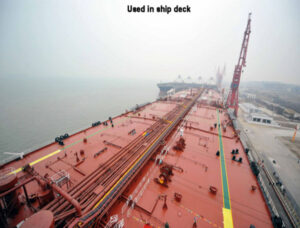Polyurethane (PU) adhesive is a high-performance bonding agent made from polyurethane resins, hardeners, and additives. Due to its unique chemical properties and superior physical characteristics, it is widely used in industries such as automotive, construction, furniture, electronics, and packaging. While PU adhesive offers numerous advantages, it also has some drawbacks. Below is a detailed analysis of its advantages and disadvantages:
Advantages of PU Adhesive
Strong Bonding Strength
One of the most notable advantages of PU adhesive is its exceptional bonding strength. It provides a very high adhesive force, effectively bonding a wide range of substrates, such as metals, plastics, wood, glass, leather, and more. PU adhesive can offer durable and reliable bonding in various applications.
- Applicable Materials: Metal, ceramics, wood, plastics, and other diverse materials.
- Durability: After curing, PU adhesive can withstand significant tensile and shear forces, making it suitable for high-strength and long-lasting bonding requirements.
Excellent Water Resistance
PU adhesives have excellent water resistance, allowing them to retain their bonding strength even in damp or wet environments. Once cured, PU adhesives will not lose their bonding strength due to water penetration or long-term exposure to water, making them ideal for outdoor or high-humidity applications.
- Waterproof Performance: Ideal for bonding materials such as wood, paper, and leather, where waterproofing is critical.
- Outdoor Applications: Commonly used in the construction and automotive industries, especially in areas like window sealing and external components where water resistance is a key requirement.
Chemical Resistance
PU adhesives exhibit excellent resistance to various chemicals, including oils, solvents, and acids. Once cured, they maintain stability even in chemically aggressive environments, making them a popular choice for industrial applications that are exposed to harsh chemicals.
- Corrosion Resistance: PU adhesives are resistant to oils, solvents, cleaning agents, and other chemicals.
- Application Areas: Widely used in environments requiring chemical resistance, such as automotive parts, electronic devices, and industrial equipment.
Temperature Resistance
PU adhesives offer good temperature resistance, maintaining their properties across a wide range of temperatures. Even under high or low-temperature conditions, cured PU adhesives retain high strength and stability.
- High-Temperature Performance: Some PU adhesives can withstand temperatures as high as 120°C or even higher.
- Low-Temperature Performance: Suitable for use in cold environments, making them ideal for applications in colder climates.
5. Elasticity and Impact Resistance
PU adhesives have a degree of elasticity, allowing them to absorb stress and prevent bonding surfaces from breaking due to impact or pressure. This makes them particularly useful in applications that require impact resistance, such as automotive seats and flooring.
- Shock Absorption: Provides some elasticity, reducing the risk of material breakage from external forces.
- Application Areas: Electronic products, automotive parts, furniture, and other areas where vibration or shock absorption is important.
Disadvantages of PU Adhesive
Long Curing Time
While PU adhesives offer strong bonding, they tend to have a slower curing time, especially single-component PU adhesives. The curing speed is dependent on environmental factors like humidity and temperature. In fast-paced production environments, the long curing time may lead to reduced production efficiency.
- Curing Time: PU adhesives can take several hours to several days to fully cure, depending on the specific formulation and environmental conditions.
- Production Efficiency: The slow curing time can cause delays in production processes, particularly in large-scale manufacturing.
High Cost
The raw materials and manufacturing process for PU adhesives are relatively complex, which results in a higher cost compared to some other adhesives like hot-melt or acrylic adhesives. This may limit their use in applications with stringent cost requirements.
- High Cost: Due to the higher cost of polyurethane resins and hardeners, PU adhesives are usually more expensive than many other common adhesives.
- Economic Considerations: For projects with a limited budget, the high cost of PU adhesives might restrict their use, especially in mass production settings.
Requires Specialized Handling and Equipment
Using PU adhesives typically requires specialized knowledge and equipment. For instance, two-component PU adhesives need to be mixed in precise ratios before use, and improper mixing can lead to a loss of bonding strength. Additionally, certain PU adhesives may require specific curing conditions, such as higher temperatures or humidity, which adds complexity to the production process.
- Mixing Ratio: Two-component PU adhesives must be mixed in an exact ratio, and any deviation can compromise the adhesive performance.
- Specialized Equipment: Some PU adhesives may require specific equipment such as heat sources, pressure, or controlled conditions, which adds to the production costs and operational complexity.
Environmental and Health Concerns
Some of the components in PU adhesives, such as isocyanate chemicals, can be toxic and irritating. Prolonged exposure to these chemicals may cause allergic reactions, respiratory issues, or skin irritation. Additionally, certain PU adhesives release harmful gases during curing, requiring proper ventilation and protective measures.
- Toxicity: Isocyanates used in some PU adhesives can cause allergic reactions, particularly with prolonged exposure.
- Health and Safety: Protective equipment such as gloves, respirators, and goggles are needed during handling to avoid health risks.
Summary
PU adhesives offer numerous advantages, including strong bonding strength, excellent water resistance, chemical resistance, temperature tolerance, and elasticity. These features make them ideal for applications where high performance and durability are required. However, their slow curing time, high cost, the need for specialized handling and equipment, and health risks related to their chemical components should also be considered when deciding whether to use PU adhesives. By carefully weighing these pros and cons, users can make informed decisions based on their specific application requirements, production environment, and cost considerations.




